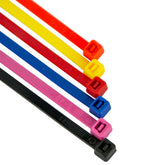Bricklaying plays an integral role within the construction sector.
This highly skilled trade has been around for thousands of years, delivering a valuable service to industries and communities. You provides safe spaces for our societies to live and work. You help look after everyone.
But it’s also essential to look after yourself and your colleagues. Unfortunately, there were 39 deaths in the construction industry in 2020/21[1], an increase from the year previous. Arming yourself with the best health and safety bricklaying knowledge will facilitate you to deliver a project safely and efficiently.
What are the health and safety risks when bricklaying?
While those unfamiliar with bricklaying may not view the profession as high-risk, there are plentiful hazards that need to be overcome on a daily basis. These include:
Working at height
50% of construction worker fatalities last year were as a result of falls from height. From faulty scaffolds and ladders to unprotected edges and adverse weather, the risk is severe. We must be fully aware of all risks before any work takes place, so we can deploy appropriate safety measures to keep workers safe.
-
Conduct a bricklaying risk assessment
Before undertaking any work, a competent person should identify all the health and safety risks you could face when working at height. This is achieved by conducting a full and thorough risk-assessment.
We always recommend employers, or those overseeing the project, produce and implement a formal procedure that clearly defines and documents the risk assessment to guarantee all relevant safety procedures are adhered to by those working at height.
-
Inspect the scaffold
When conducting bricklaying or masonry projects, you’ll often need to work on a scaffold. To create a safe working environment, it’s important to document inspection and maintenance requirements.
ScaffTag is a simple solution that allows you to keep records of checks and modifications to ensure scaffolds and other temporary structures are safe to use. Explore the range here.
-
Check the weather
Wet and windy conditions present many dangers to bricklayers when working at height. If you’re working on a scaffold, even light rain will increase the likelihood of slips, trips and falls occurring. If the rain is too hard, or your team express concerns about the weather, bring the team down until the weather has passed and the scaffold has been deemed safe to use again.
While we might be used to a bit of wind too (and granted, a light breeze may not be a good enough reason to postpone a job), if the wind speed gets too high the risks are significantly increased. There are numerous examples of scaffolds collapsing or overturning in high-wind situations, especially if they haven’t been properly fixed or tested.
-
Deploy the best fall protection equipment
There’s nothing more important to your health and safety when working at height than utilising the right equipment. But equipment itself isn’t always enough.
Is your Personal Protective Equipment (PPE) best-in-class? Does it comply with the latest health and safety regulations?
It’s easy to get caught out by equipment when the price tag tempts, but this approach could land you in trouble with the Site Safety Officer if your gear isn’t compliant. Plus, if equipment does break or fall, purchasing more equipment may be the least of your concerns, as it’s entirely possible this would result in injury. Don’t take safety for granted. Buy the best protection.
-
Avoid or reduce time spent working at height
The best way to avoid falls from height is not to work at height in the first place. In the first instance, and if possible, we always recommend undertaking as much work as possible with two feet on the ground.
-
Don’t lose your bricks!
When bricklaying at height, it’s important to ensure your bricks can’t fall to the ground and injury unsuspecting victims below. The BIGBEN® Premium SureGuard Plastic Brick Guard is now used by many scaffold contractors and is considered the most durable and premium brickguard on the market.
Slips, trips and falls
There are approximately 61,000 non-fatal injuries on-site each year, and 30% are caused by slips, trips and falls. There are plenty of measures you could implement to help reduce this figure.
-
Clean your work area as you go
Making sure your work area is clean and tidy, and that you clear up any mess as you go, is a sure-fire way reduce accidents on-site.
-
Cable management
Cables trailing across floors, stairways and doorways are seen all too often; this is one of the primary hazards that cause slips or trips. Poor cable management is a very serious health and safety risk, but a risk that can be minimised effectively and easily with a cable management solution.
-
Report any safety hazards
If you see something that doesn’t look safe, report it. Simple.
-
Ensure you have adequate lighting
Poor lighting, especially during the winter months, significantly increases the risks of slips, trips and falls. Ensuring good lighting will help you spot a potential hazard before an accident takes place.
-
Wear appropriate footwear
If due care hasn’t been taken in ensuring a clean and tidy workspace, you could easily step on sharp objects such as nails, damaging your feet. A good pair of safety boots will help reduce the damage.
Dust exposure
Unfortunately, there have been many cases over the years whereby dust inhalation has had a severe impact on workers, and their families.
If you encounter dust on a construction site, you could be at risk of a range of different illnesses such as lung cancer, silicosis, asthma, COPD and more. HSE figures show that 800 people lose their lives to cancer every year because they inhale hazardous dust particles. A further 39,000 suffer from respiratory illnesses caused by the same particles.
If you want to control the risk of harm to you and your co-workers, you must keep the level of dust on your site at as safe a level as possible.
Our recommendation for grinding: Angle Grinder Dust Shroud
You can be confident of virtually 100% dust extraction at source with this professional dust shroud when used with a suitable vacuum
Designed by a tradesman, this unique and patented design is extremely robust and lightweight.

Our recommendation for mixing indoors: Waletale Mixing Bucket Dust Extraction Attachment
The device slots onto the rim of most sizes of bucket and, in conjunction with a vacuum and HEPA filter, allows the tradesman to mix indoors safely and conveniently. It’s ideal for flooring, tiling and plastering.
Stay safe with bricklaying safety equipment from Leach’s
There are many risks bricklayers and masonry workers face day to day. As a first step, we must understand what those dangers are in order to effectively mitigate against them.
Businesses that arm themselves with up-to-date safety knowledge, and who choose the most appropriate bricklaying safety equipment, will be successful in reducing the risk of injuries to workers. Explore Leach’s range of bricklaying safety equipment now, or contact our sales team on 01432 346890 for further guidance.
*This is not a complete guide. We always recommend speaking to a competent and trained height safety specialist before undertaking any work at height.
Did you know? We recently launched the Malvern Key Tie, a crucial tool for bricklayers that can be inserted and extracted through the mortar joint to allow easy assembly and dis-assembly of scaffolding in both new build and existing properties with a cavity wall. You can get yours here.



















